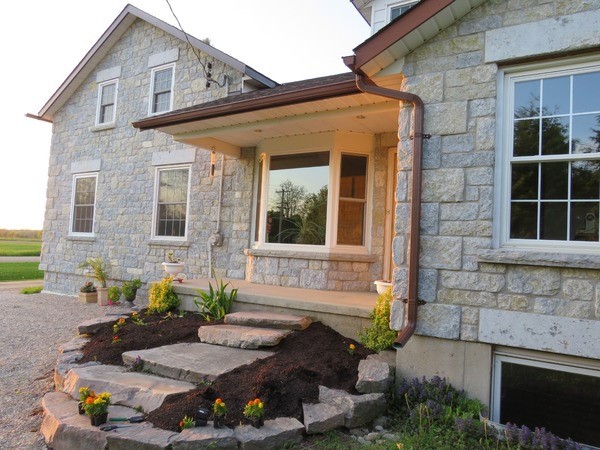Before taking the old summer kitchen and woodshed down.
After – hard to believe it’s the same house.
We took off the aluminum siding as well as the insil-brick (asphalt product) that was below the siding. Then we replaced any rotten boards before preparing to apply thin veneer. There was a proper rain-screen placed behind the thin veneer, creating a good space for moisture drainage as well as many air exchanges per day behind the stonework. My wife says she notices that the house stays much cooler in the hottest times of summer now. The stone chosen was the Weatheredge Limestone from our 1200 acre quarry on Manitoulin Island. It was cut to 5″, 6″, and 11 1/2″ heights and tumbled in our big rock tumbler. When we guillotine this stone with the grain, it becomes very colorful and keeps its color even in sunlight, compared to some other limestones that fade.
Notice how the “Quoin Corners” protrude out approximately 3/4″ more than the rest of the wall, giving them a very strong and solid appearance.
We get a lot of compliments that our “Weatheredge Limestone” has a nice warm appearance. The lintels (above windows) and sills (under windows) are also made from the same stone, however the lintels have a bush-hammered face, and the sills have a hand chiseled front face. These finishes are comparable to the split or tumbled finish on the facing stone, along with other finish possibilities, like regular split face, sawn and textured, or polished. It is amazing what different textures and finishes you can have with the same stone! You can also choose to leave the natural rustic weathered face if you enjoy a very original appearance.







